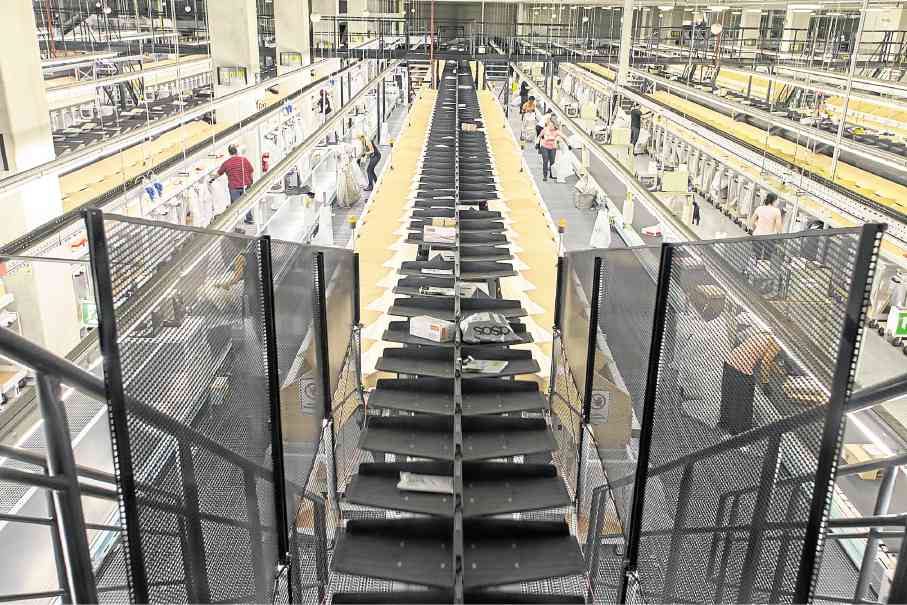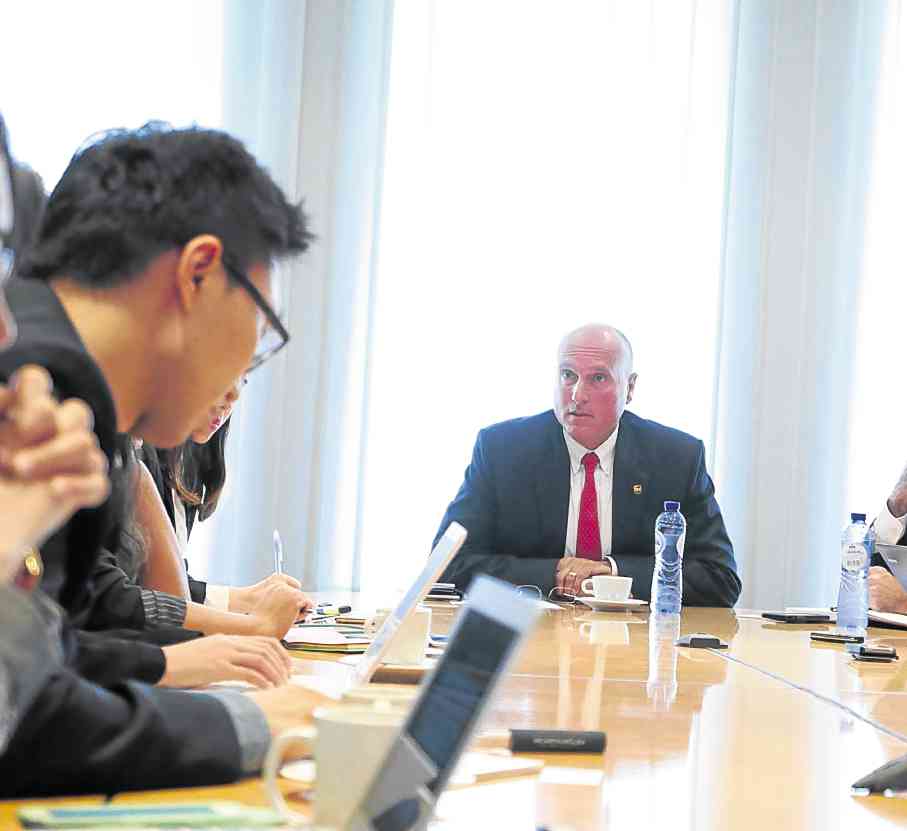UPS looks to Asia, Philippines

UPS employees unload from a plane the first batch of packages that will be sorted at the Cologne hub
A little past 10 p.m., the first of United Parcel Service’s (UPS) Boeings begins its descent into a hub within the airport complex in Cologne, Germany, while the rest of Europe goes to sleep.
Elsewhere in the world, firms such as Philippine Iino Corp., which manufactures automotive parts in its Cebu factory, are about to start the day’s operations, hoping that their products have been delivered on time to the United States, Europe and other parts of Asia.
The 40-kilometer conveyor belt housed in the 15 football fields-sized Cologne hub whir and pop out package after package, making sure it only takes less than 15 minutes for a box to journey toward a delivery truck waiting at the end of the line.
It is this hub in Cologne that not only serves as a centerpiece of the international logistics firm’s operations in Europe, but also a gateway to an extended express network serving the entire globe. It is this cohesive display of operations that allows UPS to handle day by day 2 percent of the world’s gross domestic product, or about 190,000 packages per hour, while half of the world is awake and the other half is asleep.
“The hub helps UPS customers successfully compete and do business on the important trading lanes within Europe and linking Europe to North America and Asia in an era when free trade agreements on the horizon promise growth for business of any size,” the firm said.
In a briefing with reporters in September, UPS Europe president Nando Cesarone said the logistics company had been “investing feverishly over the years and that investment serves as a gateway for customers around the world, specifically for Asia, doing trade here in Europe.”
In 2014, the firm announced it was investing $2 billion to expand its international infrastructure in Europe, a big chunk of which went to the expansion of its biggest facility in the continent.
Cesarone said the growing economies in Asia have made this pivot all the more needed.
“As the spending power continues to increase in Asia, Europeans are becoming more interested in shipping goods to Asia,” he said.
Taste for luxury
The rise of e-commerce in the last decade has broken down continental barriers, bringing with it a frenzy of online purchases and home deliveries. Between 2016 and 2020, UPS sees online retail across the globe to grow 3.5 times the GDP rate while online cross border trade is expected to grow six times the GDP.
Craig Arnold, UPS Europe vice president for business development and Middle Market sales, said UPS had taken notice of two opportunities where it could expand services vis-a-vis the Asian market: Logistics for luxury brands and automotive manufacturing.
“People with money to spend in Asia is part of the pull for luxury brands. These brands will also want to deal with a trusted brand, especially on the delivery part, because it’s an extension of their image,” Cesarone added. The same is true for automotive manufacturers in Europe that want to gain a foothold in the continent’s once poorer cousin.
According to Oxford Economics, Asia’s share in the world GDP has gone up to 38.8 percent in 2014. By 2025, this is expected to grow to 45 percent. More than just a production and manufacturing link for firms in the West, the growing affluence and middle class have also made the continent an emerging customer for the world’s goods.

UPS workers at the Cologne hub begin sorting packages for delivery across Europe, United States, Asia and the rest of the world.
“Our business in Asia in the past has been export-focused, now it’s becoming more and more import-focused, which provides additional opportunities for us in terms of scale,” Cesarone said.
The Philippine opportunity
This is also the reason why a domestic network also makes sense, especially for a logistics firm like UPS, he said.
“Our investment is organic and we’re targeting cities where we don’t have delivery centers,” he said.
In the Philippines, UPS has a hub in the Clark International Airport complex that began operations in 1997. It also flies its Boeing 737s to the Mactan Cebu International Airport, which the likes of Philippine Iino Corp. rely on.
The Philippine branch of Japanese firm Iino Manufacturing Company makes automotive parts in its three 24-hour plants in Mactan. The parts are then shipped across the globe, specifically for its biggest client, Honda Foundry (Asian) Co. Ltd.
The firm has had difficulties because its previous logistics provider could not meet its needs. This meant a high failure rate that affected Honda’s production schedule, and thus, Iino’s bottom line.
UPS came into the picture and mapped out solutions for Iino that resulted in cutting unplanned expenses.
It is this same opportunity that UPS wants to look for in Manila. Infrastructure in aging Manila could be detrimental to businesses looking for an effective and efficient last mile delivery, but UPS is not bothered.
“Infrastructure hurts productivity and efficiency, but there are investments coming in. You see construction everywhere, you also see the connection [being made between] Manila and Clark. When that’s done, that’s going to allow for a more efficient transport,” Cesarone said.
He said UPS does not make its investment decisions based on “the last six months [of growth], but we look to the future and the Philippines has healthy growth prospects.”
Of drones and the Brexit
There also other opportunities that challenge UPS—those that need to be matched with corresponding research and technology.
Arnold said UPS would always be one of the first to try new alternatives in delivering packages, say, drones.
In Rwanda, where torrential rains always wash out 70 percent of roads leading to poor villages, drones have become angels of sorts. Health workers usually travel 12 hours by motorcycle to deliver blood plasma to clinics. Using only drones, delivery time has been cut by more than a third.
UPS has used drones largely for humanitarian purposes, but “we did see a unique opportunity, how it fit in our delivery network. It’s a great place to start.”
The only thing that’s left in the equation is how businesses will want to grow their operations further vis-à-vis the growing and developing logistics network.
“The Brexit, the security concerns, they do exist, but there’s nothing that good businesses can’t do well in,” Cesarone said.















